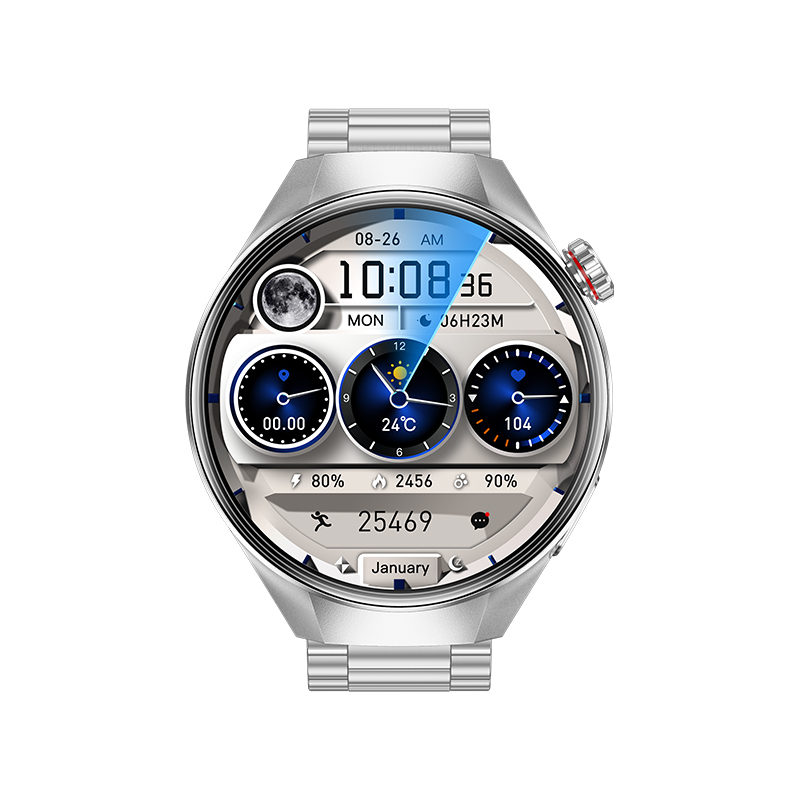How does the firmware upgrade mechanism of the smart bracelet ensure data transmission integrity?
Release Time : 2025-11-04
Firmware upgrades for smart bracelets are a core component for maintaining device performance, fixing vulnerabilities, and introducing new features. Their data transmission integrity assurance mechanism involves multi-layered technical design, covering the entire process from data encapsulation to terminal verification. The following analysis focuses on data encapsulation, transmission protocols, acknowledgment mechanisms, error control, integrity verification, encryption protection, and redundancy design.
In the data encapsulation stage, firmware upgrade data packets employ a structured design. Each packet contains a header, payload, and checksum (CRC). The header identifies the data packet type, the payload carries the actual firmware data, and the checksum is generated using a specific algorithm (such as CRC32) for error detection during subsequent transmission. This layered encapsulation design ensures basic integrity verification capabilities before data transmission.
At the transmission protocol level, when a smart bracelet establishes a connection with a mobile terminal (such as a smartphone) via Bluetooth or Wi-Fi, transmission parameters are pre-negotiated, including packet size, transmission rate, and acknowledgment mechanisms. For example, both parties may agree that after every N data packets transmitted, the smart bracelet must return an acknowledgment message (ACK) to inform the mobile terminal which data packets have been successfully received. If a data packet transmission fails, the smart bracelet triggers a retransmission via a negative acknowledgment (NACK), thus preventing data loss.
The acknowledgment mechanism relies on bitmap technology. The smart bracelet pre-configures a bitmap corresponding to each data packet group, with each bit representing the reception status of a data packet. A successful reception sets the corresponding bit to 1; a failure sets it to 0. After transmission, the smart bracelet feeds back the bitmap in byte-level format to the mobile terminal, which then accurately retransmits erroneous data packets based on the bitmap, rather than retransmitting the entire packet, significantly improving transmission efficiency.
For error control, the smart bracelet employs a combined strategy of Forward Error Correction (FEC) and Automatic Repeat Request (ARQ). FEC embeds redundant information into the data, enabling the receiver to autonomously correct some errors and reduce the number of retransmissions; ARQ ensures reliable transmission of critical data packets through the acknowledgment mechanism. The two work together to reduce transmission latency and improve data integrity.
Integrity verification is the last line of defense in firmware upgrades. After receiving all data packets, the smart bracelet calculates the hash value of the firmware data (e.g., using the SHA256 algorithm) and compares it with the encrypted information (including a hash description) carried in the data packets. If they match, the data is confirmed to be complete and error-free; otherwise, an error is considered to have occurred during transmission, and the firmware needs to be downloaded again. This mechanism effectively prevents the risk of device failure due to data tampering or transmission errors.
Encryption protection is implemented throughout the entire firmware upgrade process. Communication between the mobile terminal and the smart bracelet uses end-to-end encryption technology to ensure that data is not stolen or tampered with during transmission. Simultaneously, the firmware data packets themselves may contain digital signatures. The bracelet verifies the signature's validity upon receipt, allowing only firmware from the official server to be upgraded, further enhancing security.
Redundant design provides additional protection for data integrity. For example, firmware upgrade data may be divided into multiple independent data blocks, each containing complete verification information. Even if some data blocks fail to transmit, the bracelet can recover the complete firmware from the other data blocks, avoiding upgrade interruptions due to errors in a single data block.







